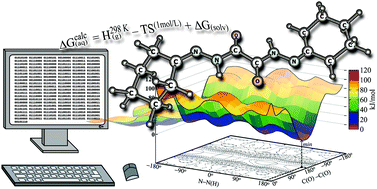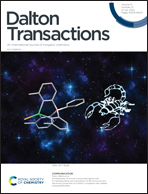Informing our understanding of the copper–cuprizone reaction with computational chemistry†
Abstract
The reaction of copper with bis(cyclohexanone)oxaldihydrazone (cuprizone) is a challenging coordination chemistry problem that has confounded attempts at elucidation for the past 70 years. The product of the reaction, a blue copper complex, wherein the cuprizone ligand is hydrolyzed, has been the primary focus during its history. We have recently characterized an additional green multi-copper product which contains unhydrolyzed cuprizone, which only added to the mystery. Using density functional structure models and thermodynamic calculations we address several of the long-standing questions surrounding the copper–cuprizone reaction, as well as identify the likely reaction pathway that gives rise to the blue and green products. Cu(II)-induced asymmetric hydrolysis of the cuprizone ligand is essential for formation of the blue product, followed by a series of Cu(II)-induced deprotonation and coordination events, with complex formation terminating with hydrolyzed cuprizone tautomerization and intramolecular electron transfer, generating a pseudo-macrocyclic Cu(III) species. Alternatively, in the presence of excess Cu(II), or in non-aqueous solvents, a green multi-Cu(II) complex forms comprised of alternating Cu(II)–cuprizone units. Structure calculations are supported by experimental data and represent the most rigorous approach to-date toward understanding the complex solution chemistry of copper with cuprizone.



 Please wait while we load your content...
Please wait while we load your content...